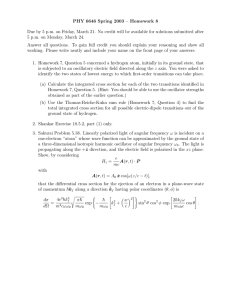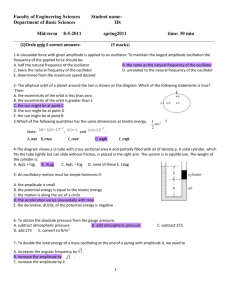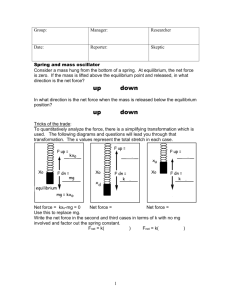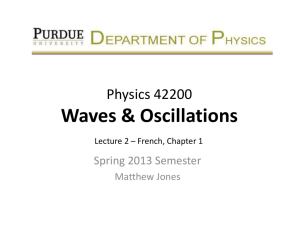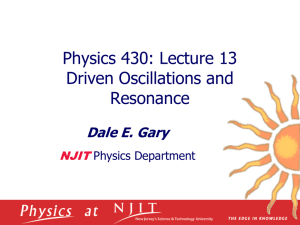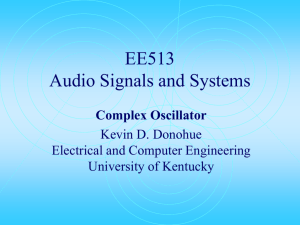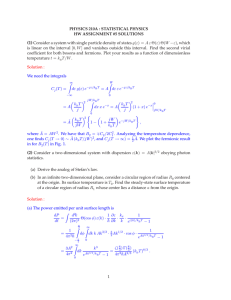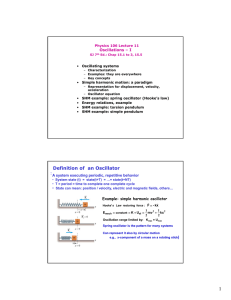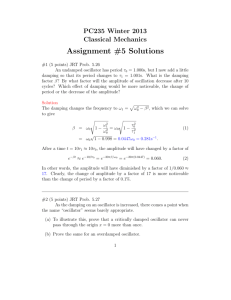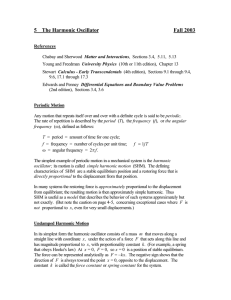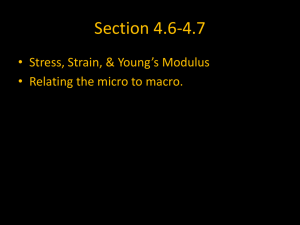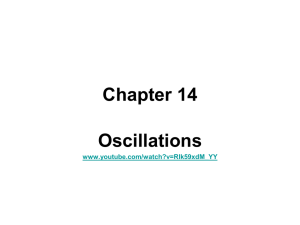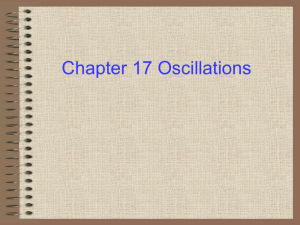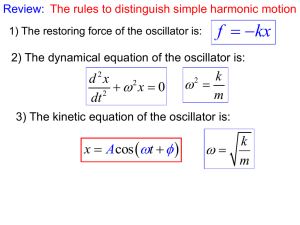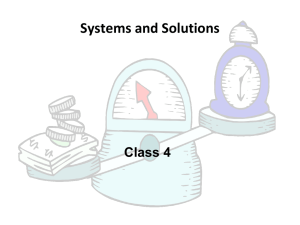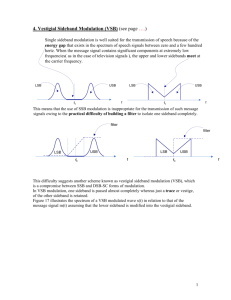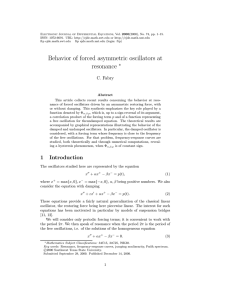m External driver Forced harmonic motion – the damped and driven
advertisement
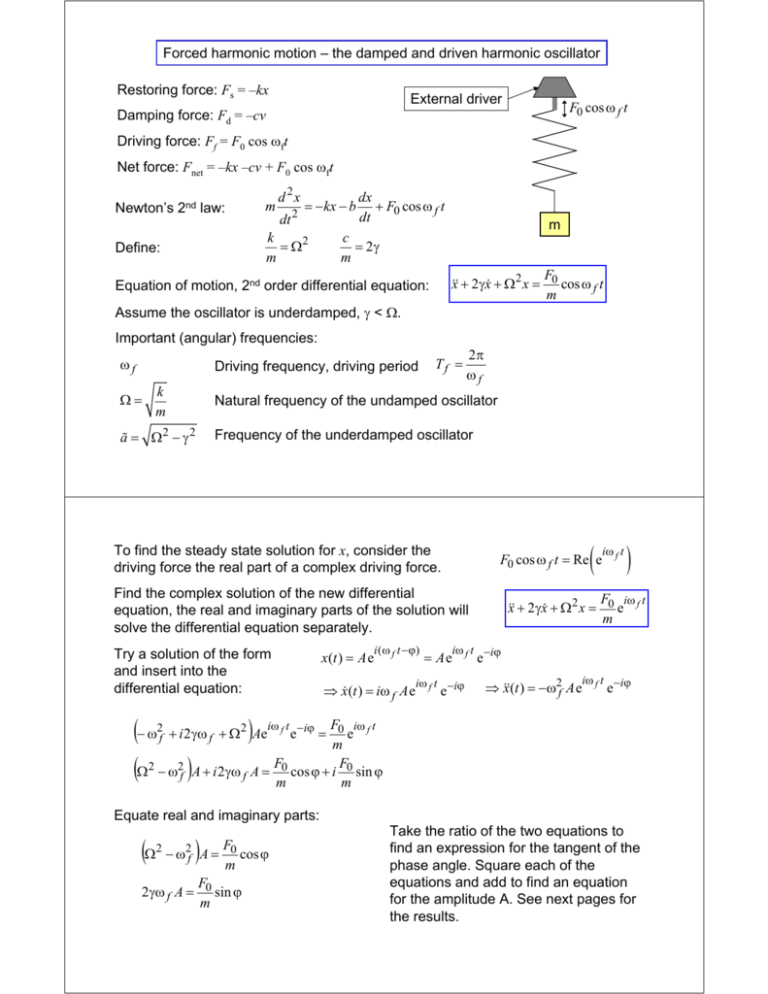
Forced harmonic motion – the damped and driven harmonic oscillator Restoring force: Fs = –kx External driver F0 cos ω f t Damping force: Fd = –cv Driving force: Ff = F0 cos ωft Net force: Fnet = –kx –cv + F0 cos ωft Newton’s 2nd law: m d 2x dt 2 = − kx − b k = Ω2 m Define: dx + F0 cos ω f t dt m c = 2γ m F x + 2 γx + Ω 2 x = 0 cos ω f t m Equation of motion, 2nd order differential equation: Assume the oscillator is underdamped, γ < Ω. Important (angular) frequencies: ωf Driving frequency, driving period k m Ω= Tf = 2π ωf Natural frequency of the undamped oscillator a = Ω 2 − γ 2 Frequency of the underdamped oscillator ( ) To find the steady state solution for x, consider the driving force the real part of a complex driving force. F0 cos ω f t = Re e Find the complex solution of the new differential equation, the real and imaginary parts of the solution will solve the differential equation separately. x(t ) = A e Try a solution of the form and insert into the differential equation: i (ω f t −ϕ) ⇒ x (t ) = iω f A e = Ae F iω t x + 2 γx + Ω 2 x = 0 e f m iω f t − iϕ iω f t − i ϕ e iω f t e ⇒ x(t ) = −ω2f A e iω f t − iϕ e (− ω2f + i2γω f + Ω2 )Aeiω t e−iϕ = Fm0 eiω t (Ω2 − ω2f )A + i2γω f A = Fm0 cos ϕ + i Fm0 sin ϕ f f Equate real and imaginary parts: ( ) F Ω − ω2f A = 0 cos ϕ 2 m F0 2 γω f A = sin ϕ m Take the ratio of the two equations to find an expression for the tangent of the phase angle. Square each of the equations and add to find an equation for the amplitude A. See next pages for the results. Amplitude of oscillations: A= F0 / m ( Ω2 − ω2f ) + ( 2γω f )2 2 Ω =1, γ = 0.2, F0/m = 1 3 Amplitude 2.5 2 1.5 1 0.5 0 0 0.5 1 1.5 ωf / Ω 2 2.5 3 2.5 3 Phase difference between oscillator and applied force: 2 γω f Ω 2 − ω2f Ω = 1, γ = 0.2, F0/m = 1 3 2.5 Phase difference tan ϕ = 2 1.5 1 0.5 0 0 0.5 1 1.5 ωf / Ω 2
